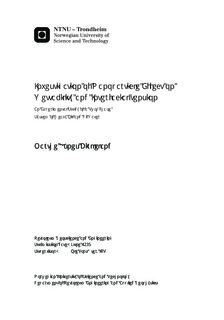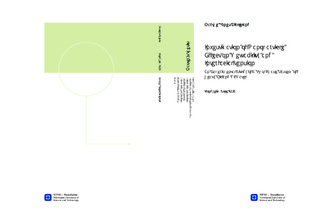| dc.contributor.advisor | Torsæter, Ole | nb_NO |
| dc.contributor.author | Birkeland, Marthe Åsnes | nb_NO |
| dc.date.accessioned | 2014-12-19T12:17:24Z | |
| dc.date.available | 2014-12-19T12:17:24Z | |
| dc.date.created | 2013-09-16 | nb_NO |
| dc.date.issued | 2013 | nb_NO |
| dc.identifier | 648650 | nb_NO |
| dc.identifier | ntnudaim:8931 | nb_NO |
| dc.identifier.uri | http://hdl.handle.net/11250/240096 | |
| dc.description.abstract | The increasing demand for hydrocarbons has led to a hope of developing more efficient recovery techniques for unconventional resources such as heavy oil. Heavy oil is movable in the reservoir, but recovery is time-consuming and expensive. Nanofluid is investigated as a possible enhanced oil recovery method. Nanofluid promise an alternation of wettability and a reduction of the interfacial tension as nanoparticles added to one of the fluid phases disturbs the initial equilibrium state. %The nanofluids used in this thesis are hydrophilic and hydrophobic silica nanoparticles dispersed in a base fluids, di water or ethanol respectively. The spontaneous imbibition test was performed to investigate how nanoparticle settlements on the pore surface influence wettability. The cores used in the tests were artificial and made of glass beads with a diameter of 1 mm where some cores where surface treated with nanofluids. The imaging method and the spinning drop method were executed to investigate how the presence and difference in hydrophilic nanoparticle concentration in di water influence the contact angle and interfacial tension. A heavy oil mixture of dodecane and bitumen was used in the experiments. The heavy oil had a viscosity of 198 cp at room temperature. A change in rate or end volumes in the spontaneous imbibition test can be caused by altered wettability or a change in the interfacial tension between the fluids. The end volumes showed little difference between the cases.The rates obtained showed low repeatability for similar cores, but a change of rate was observed. The strongest rate change was for the hydrophobic cases. In the contact angle and interfacial tension measurements a decline was observed for the measurements with hydrophilic nanoparticles present. However, the values of both measurements increased from 0.01 wt% to 0.1 wt% of nanoparticles in the di water.The reason for this is not clear, and it contradicts the assumption of more water-wet conditions for higher nanoparticle concentrations. Besides this, the experimental results are in line with the expectations. | nb_NO |
| dc.language | eng | nb_NO |
| dc.publisher | Institutt for petroleumsteknologi og anvendt geofysikk | nb_NO |
| dc.title | Investigation of Nanoparticle Effect on Wettability and Interfacial tension: An Experimental Study of a Two-Phase System of Heavy Oil and Di Water | nb_NO |
| dc.type | Master thesis | nb_NO |
| dc.source.pagenumber | 127 | nb_NO |
| dc.contributor.department | Norges teknisk-naturvitenskapelige universitet, Fakultet for ingeniørvitenskap og teknologi, Institutt for petroleumsteknologi og anvendt geofysikk | nb_NO |

